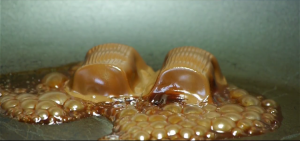February 7 of Year Three of the pandemics of 2022 and 1920.
Hard in the center and soft everywhere else.
That’s my assessment of the Washington Post article from yesterday that’s now circulating today across the nation. The article is about the importance of knowing the parallel dates of early February in 2022 and 1920.
Yes, at the center of the point is a hard fact—the cursed illness is still with us, the coronavirus of the pandemic is still here in an altered form. Yes, it was further true at the three-year mark 102 years ago. Got it. (In fact, I wrote a post of my own back in late January that indicated much the same thing about then-and-now. I’ve written nearly a hundred such posts.)
Say goodbye, however, to the hard factual center of the Post piece. Say hello to the soft remainder of inference and tone. I say this because I took the Post and its writer at their word but added a twist: I looked for myself at February 7 of the vaunted Third Year of the influenza pandemic, in 1920.
And well, without casting stones or jabbing a finger in the air, let’s put it like this: 2-7-1920 looks somewhat different from the 2-7-2022 article. More precisely, as a reader and researcher and writer, it feels different, too.
It’s a mush.
Headlines across American newspapers on February 7, 1920 read as follows: “Fewer Cases But Many Very Ill” (Spokane, WA); “Decrease In Influenza Cases” (St. Louis, MO); “Big Decrease In Influenza Reports” (Boston, MA). Similar scenes were elsewhere.
Other newspapers told of other trends, with cases going up in Utah, Pennsylvania, and New York. And true, similar scenes were elsewhere. Not a shock—the thing acted differently in different places.
It was mush in a mixed bag.
US Surgeon General Rupert Blue perhaps said it best in a nationally featured article of his own on February 7, 1920: he pointed out that influenza had followed a descending pattern in recent decades and that the situation in February 1920 seemed to fit that pattern. Blue also stated that the most important fact to remember was that still so few facts were known. Imagine it—he urged modesty in the pronouncement of knowledge, as if the loudness of one’s voice did not equate to certitude. The audacity of him.
The New York City Board of Health asserted a trio of points on February 7, 1920. First, the illness was back. Second, the degree of its fatalities and lethalities were less than the horrific wave months ago. Third, it’s quite likely the current uptick is not the strain of earlier waves but rather the more conventional, seasonal variety people had known for generations, in other words, it could be expressing the patternism that Rupert Blue had referenced. It was possible, the Board indicated, a true-Blue stance if ever one existed.
The Post article of 2022 also suggests or infers that the third wave was pushed back to the lesser-read sections or placements of newspapers in 1920. Why would that be true? The answer is left unstated in the Post article, but I can’t help wondering if we’re supposed to smell something sinister afoot, maybe the deniers at work, maybe the deniers’ media perhaps, or maybe again they were plain ol’ rubes and simpletons. My answer, however, is crystal-clear, one I shared last week in my blog post of “A People And Two Lifes.” We live a Life of Doom and they lived a Life of Death. See here https://historicalsolutions.com/1918-pandemic/the-rhyme-of-a-time-the-poem-of-23/
In a weird way I arrive at the same concluding paragraph of the Post article but with a much brighter demeanor. The Post quoted an expert who said that “I think it’s going to stay. I don’t think elimination is feasible or even realistic at this point. Hopefully we can live more peacefully with this virus.” Totally, totally, totally agree. That may not deserve a smile but it surely deserves a breath of relief and a hopeful look onward.
I guess the biggest lesson of the Pandemic’s Year Three in 1920 was that it was OK to expect to read that in smaller font, on page six, at the bottom of the page, where it belonged. That’s how it goes when you live a Life of Death. As we know, though, that’s not at all how it goes, where it goes, and as it goes when you’re dealing with a Life of Doom. We’re all top-screened, bolded and flashing lettering with pop-up ads, and the furrowed brow that hell and hopelessness are a half-step away.
Thanks for reading. All the best, Dan








